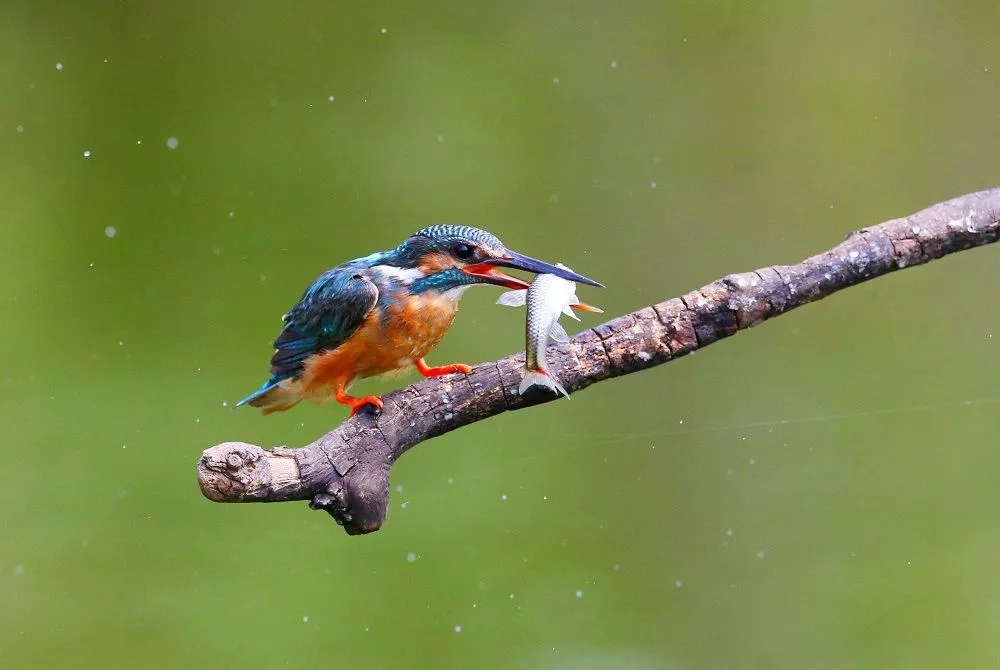Kingfisher birds are a stunning group of avian species known for their vibrant plumage and unique physical attributes. These birds exhibit a remarkable diversity in appearance, showcasing an array of colors, sleek bodies, and distinctive features. In this article, we will explore what a kingfisher looks like, including its physical appearance, size, habitat, and behavior.
Physical Appearance:
The kingfisher is a small to medium-sized bird with a stocky body and short tail. The bird’s head is relatively large, with a sharp, pointed bill that is longer than its head. The large head and bill allow the kingfisher to catch fish with ease. The bird’s eyes are also quite prominent and are positioned high on its head, giving it excellent vision both above and below the water.
Size and Shape:
Kingfisher birds typically have a compact and streamlined body shape, which aids in their swift and agile flight through the air and water. They range in size from small to medium-sized birds, with lengths varying between 10 to 17 inches (25 to 43 centimeters), depending on the species. They also vary in weight, with some species weighing less than 20 grams (0.7 ounces) and others weighing up to 200 grams (7.1 ounces). Kingfishers possess short legs and sharp, hooked bills perfectly adapted for their piscivorous lifestyle.
Plumage and Coloration:
One of the most striking features of kingfisher birds is their vibrant plumage, which exhibits a dazzling array of colors. Their feathers are known for their brilliant blues, deep greens, fiery oranges, and rich chestnut hues, often combined with contrasting white or buff markings. These vibrant colors are not the result of pigments but rather structural coloration, where the microscopic structure of the feathers refracts and reflects light to produce iridescent hues. This gives kingfishers a jewel-like appearance that glimmers in sunlight.
Distinctive Head and Bill:
Kingfishers have unique head structures and bills that contribute to their iconic appearance. They possess large heads with short necks, which adds to their overall compactness. Their bills are long, straight, and sharp, with a slightly curved tip, perfect for capturing fish with precision. The bill coloration varies among species, ranging from black to bright red or orange, creating an eye-catching contrast against their colorful plumage.
Crests and Head Patterns:
Many kingfisher species feature elaborate crests or head patterns that add to their allure. These crests are often short and spikey, extending from the top of the head and can be raised or lowered depending on the bird’s mood or communication signals. In some species, such as the Malachite Kingfisher, the crest is a stunning combination of vibrant colors. Additionally, some kingfishers exhibit bold head patterns, including stripes, spots, or patches of contrasting colors, adding further intrigue to their visual appearance.
Flight and Perching Posture:
When in flight, kingfishers showcase their agility and grace. They have rapid, direct flight patterns, with quick wing beats that allow them to swiftly maneuver through the air. Kingfishers often fly low over the water, using their keen eyesight to spot prey below the surface. While perching, they maintain an upright posture, often with their bodies parallel to the perch, ready to launch into action at a moment’s notice.
Sexual Dimorphism:
In certain kingfisher species, there is sexual dimorphism, where males and females display distinct visual characteristics. Male kingfishers may exhibit more vibrant and striking colors compared to females, who may have muted or less intense plumage. These differences are often attributed to the need for males to attract mates and defend territories.
Conclusion:
Kingfisher birds are a visual marvel, captivating observers with their vivid plumage, distinctive features, and elegant form. Their jewel-like colors, streamlined bodies, and specialized bills are a testament to the wonders of avian adaptation and evolution. By appreciating the enchanting beauty of kingfisher birds, we gain a deeper understanding of the diverse and remarkable creatures that grace our natural world.


 Facebook
Facebook  Instagram
Instagram  Youtube
Youtube 